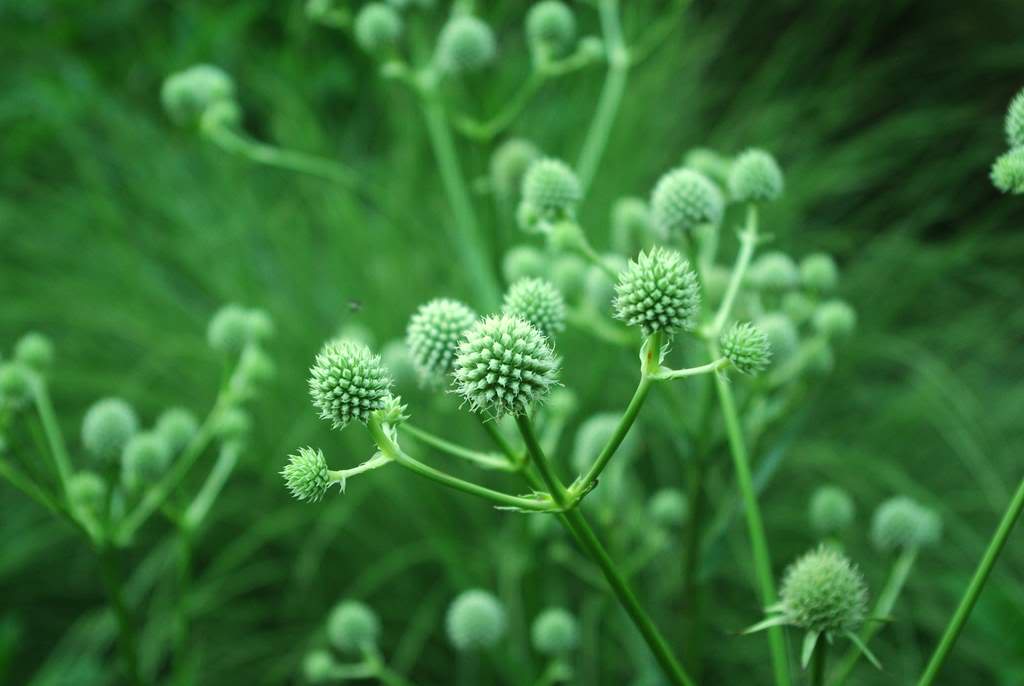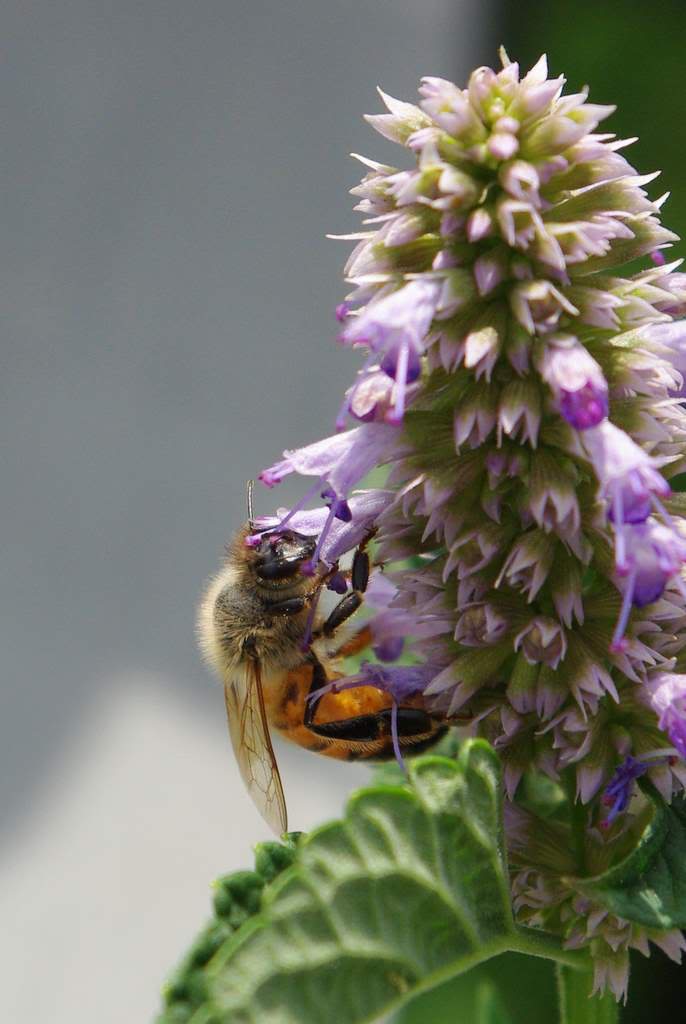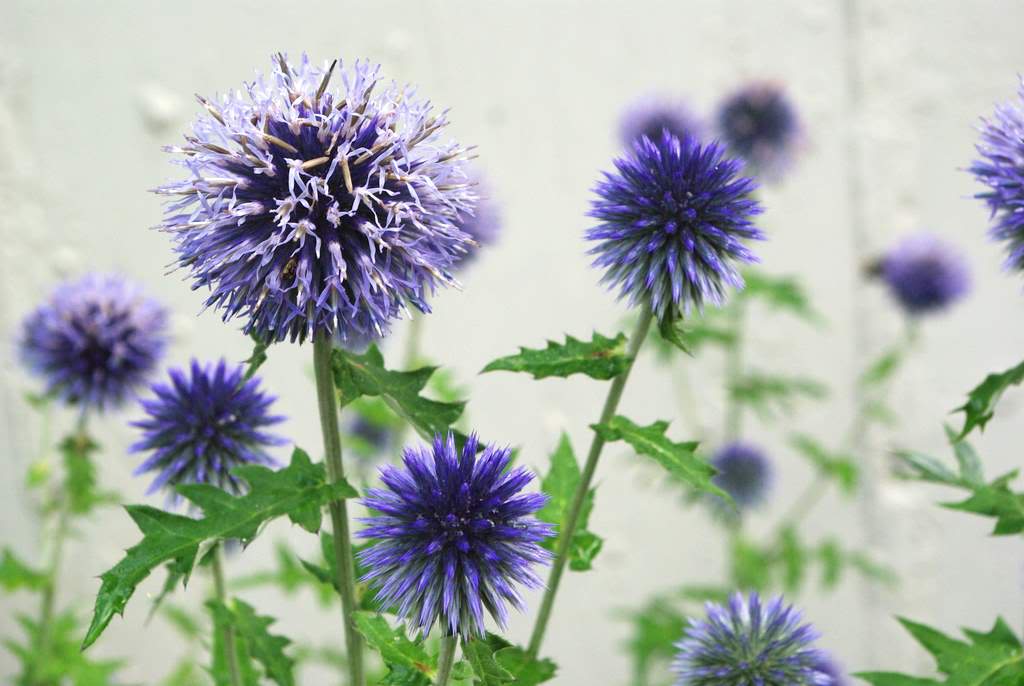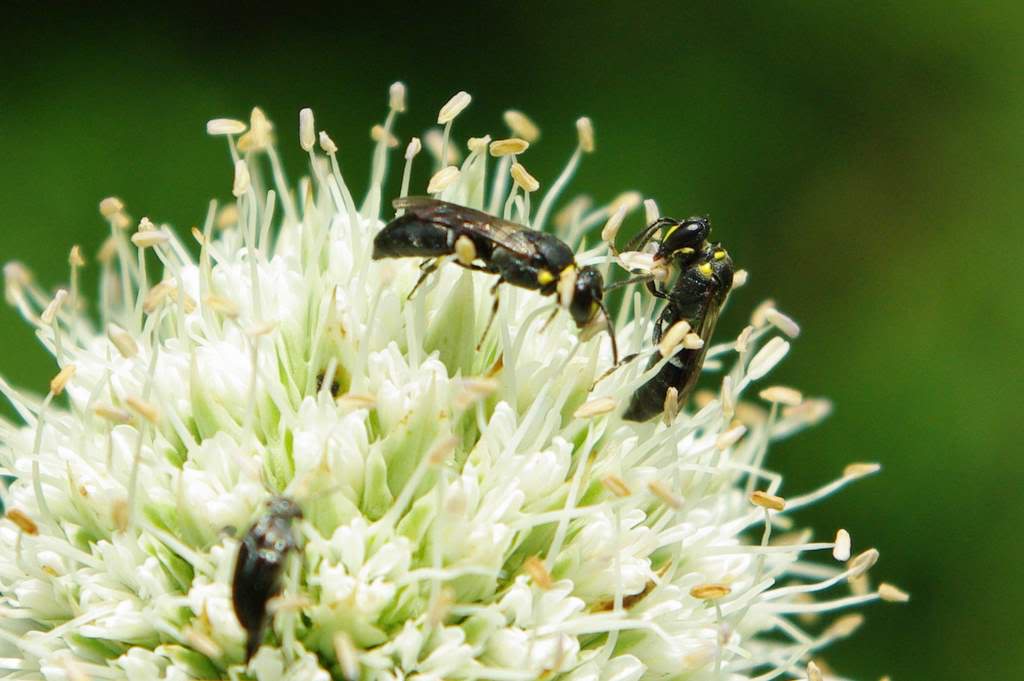Of course I'm wrong, and you are too if you agreed with me. In my experience the bees like plants that produce clusters of tiny flowers best. Something like this native "Rattlesnake Master" (Eryngium yuccifolium). It doesn't even really look like a flower from afar.
It may not look like a flower, and I'm not sure if it has any detectable fragrance, but this plant is a bee magnet:
Well, it's a bee magnet for the right kind of bee. That leads me to Question 3: When I say "bee", what do you think of? Probably a honey bee:
Seen here on Agastache foeniculum, another "cluster of tiny flowers" plant.
Maybe you think of a big bumble bee instead? Here are a few bumbles on Echinops bannaticus 'Blue Glow' -- or "Globe Thistle":
I love how you can see the pollen grains on the back of the one bee! Globe thistle is another "cluster of tiny flowers" plant:
The bumble bees really, really love this one.
Back to the Rattlesnake Master for a minute -- it doesn't seem to attract either honey bees or bumble bees. It instead attracts lots of tiny bees and other pollinators:
There is literally a swarm of tiny bees around this plant! (It's hard to get a good photo of them because they're moving around so quickly!)
Here's a little butterfly -- not a bee, but still a pollinator. This one is some type of hairstreak I believe, but I'll have to get out the butterfly books later to make a positive identification:
It's gone to a flower that has just started to open, probably because the bee swarm hasn't discovered this one yet -- the butterfly has got the whole thing to itself for now!
Seeing all of these tiny bees (and other insects) on these small flower clusters made me go back and take a closer look at some other flowers too:
Not exactly the first things that come to mind when you think of bees, are they?
They certainly are beautiful though, and they are important pollinators. Here's a great webpage about native bees. A couple of excerpts from that website:
Native bees come in a wide range of colors and sizes, from tiny sweat bees less than a quarter of an inch long to bumble bees over an inch in length. While some of these species may look like the familiar image of a bee with hairy yellow and black stripes, they may also be dark brown, black or metallic green and blue, with stripes of many colors. Most are solitary, with each female creating and provisioning her nest without the support of a caste system of workers. Most are unlikely to sting (Shepherd et. al., 2003).
Many native bee species are more effective than honey bees at pollinating flowers on a bee-for-bee basis. For example, according to U. S. Department of Agriculture researchers, only 250 female blue orchard bees (Osmia lignaria) are required to effectively pollinate an acre of apples. The is the equivalent service of one to two honey bees hives, each containing 15,000 to 20,000 workers (Bosch and Kemp, 2001).
As far as the bees are concerned, the tiny flowers win! As far as I'm concerned though, both I and my garden win because of the bees.










No comments:
Post a Comment